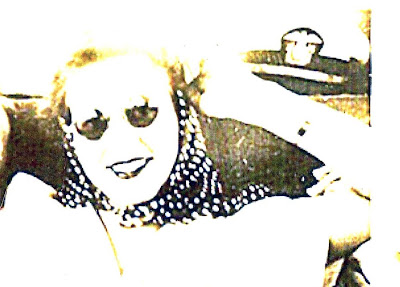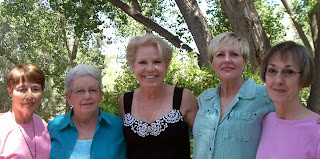
Consider this free advertisement for
Knitters Review, because that weekly magazine is a wealth of information. It has "timely, in-depth, and insightful reviews for knitting and fiber enthusiasts", and is chock full of goodies, all relating to products dealing with fiber.
This week, buffalo fiber is showcased on their webpage:
What do you knit for someone truly special? If you can, you save your pennies and splurge on a glorious yarn, taking your time to knit an equally glorious gift from it. You try to find a yarn that, even in its natural state, whispers sweet nothings into the ears of its wearer.
I love working with different animal fibers. New blogger friend, Brenda at
Split Rock Ranch, raises, trains, shears, and sells llama furs, and she even dyes and spins their fiber. One smart cookie, that Brenda. Here is what she sold me yesterday:

You can find her Etsy Store at this website:
Split Rock Llama and Alpaca on Etsy.
This yarn is merino wool, handpainted and handspun in colors of fuchsia, burgundy, black and gray. I will combine it with a purple merino wool to create another baby sweater.
I asked Brenda at
Split Rock Ranch about the properties of alpaca wool, and she replied with this:
Llama and alpaca are hollow fibers so they trap air and act as an insulator, very much like down. They are best spun fine(r) and knitted in smaller projects like scarves, hats, etc. unless they are spun laceweight. Because they don’t have “memory” like sheep’s wool, they can tend to get stretched out of shape if your garment is too bulky and heavy.
An open-work shawl done in llama wool would be gorgeous. Tip to make that skein stretch a bit farther - use big needles! That leaves a bit of space between stitches so the garment doesn’t get too hot.
Llama fiber will be a new experience (in my limited repertoire, at least) to use in knitting winter garments, so come on cold weather... those knitting needles are anxious for a workout with animal fibers.




 This is a work shirt which I repurposed, using nine different pieces of vintage embroidery found on antique table runners and linen napkins to cover the front panels, back yoke and sleeve cuffs. Some of the embroidery was so old it was frayed, so using the Wonder Under product helped insure fabric stability.
This is a work shirt which I repurposed, using nine different pieces of vintage embroidery found on antique table runners and linen napkins to cover the front panels, back yoke and sleeve cuffs. Some of the embroidery was so old it was frayed, so using the Wonder Under product helped insure fabric stability. Incorporating vintage hankies on pillows top:
Incorporating vintage hankies on pillows top: 
 The fairie was sketched by Michelle at
The fairie was sketched by Michelle at 





 The center of the magenta colored ornament at the lower right of the picture was made with a small crochet hook and sock yarn, again using the same technique. Then the small pink rose was sewn into the center of the larger crocheted flower. If made about the size of a US quarter, they will look cute on a baby sweater.
The center of the magenta colored ornament at the lower right of the picture was made with a small crochet hook and sock yarn, again using the same technique. Then the small pink rose was sewn into the center of the larger crocheted flower. If made about the size of a US quarter, they will look cute on a baby sweater.



 USA, KA4WWN, JOHN P HENIFORD, 1729 CRICKET RUN RD, YORK, SC 29745; from his email:
USA, KA4WWN, JOHN P HENIFORD, 1729 CRICKET RUN RD, YORK, SC 29745; from his email:

 Stretched canvas painting continues after a week of work with further definition of petals:
Stretched canvas painting continues after a week of work with further definition of petals:
 It is about half finished at this point. It is 30" x 40", and there is still lots to do on it. Grounding the leaves from the base is a hurdle that needs to be overcome. Any helpful suggestions?
It is about half finished at this point. It is 30" x 40", and there is still lots to do on it. Grounding the leaves from the base is a hurdle that needs to be overcome. Any helpful suggestions?








